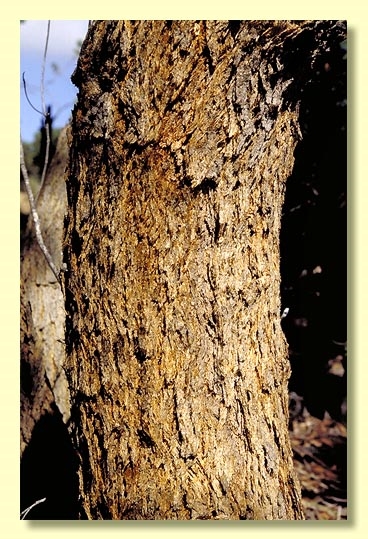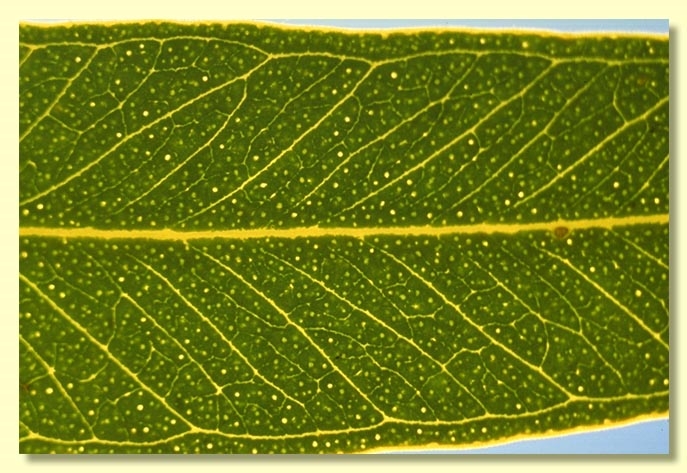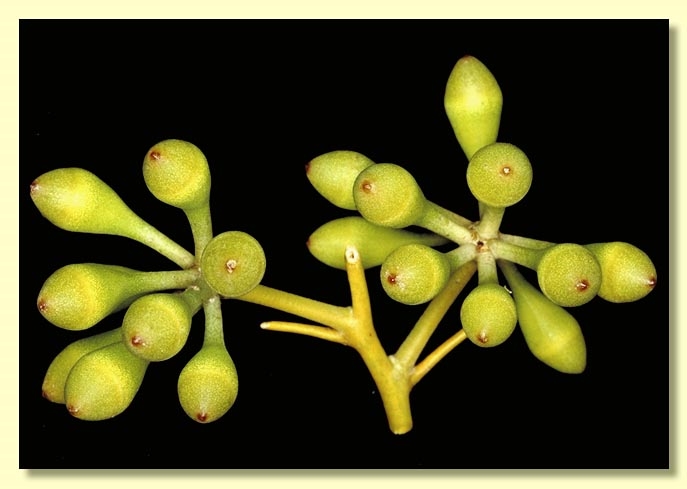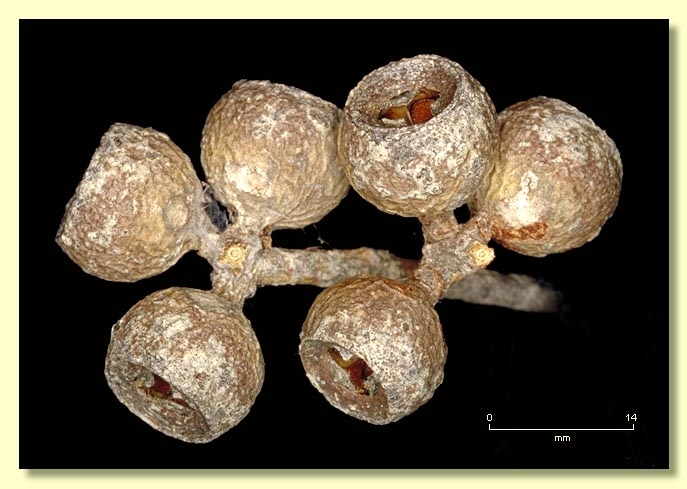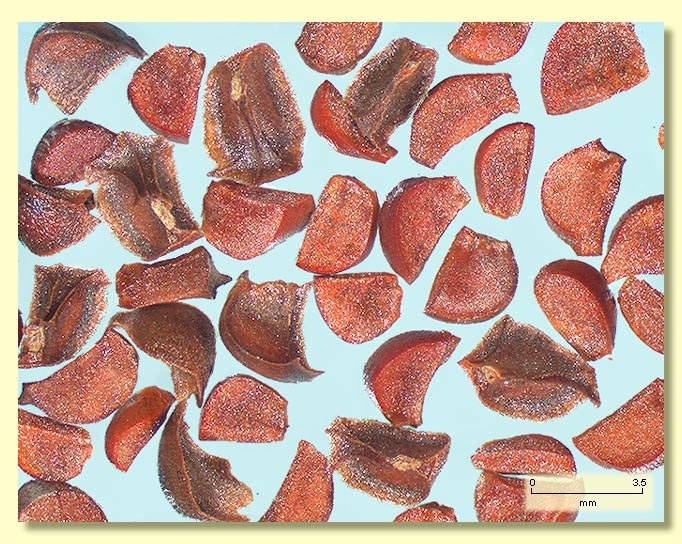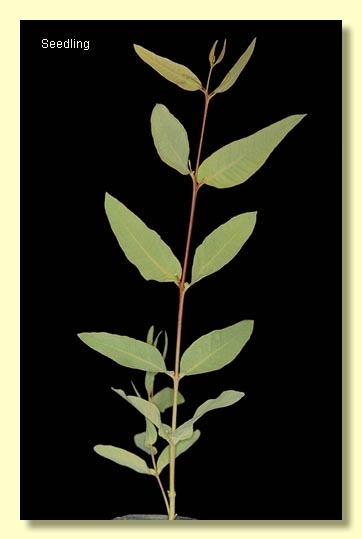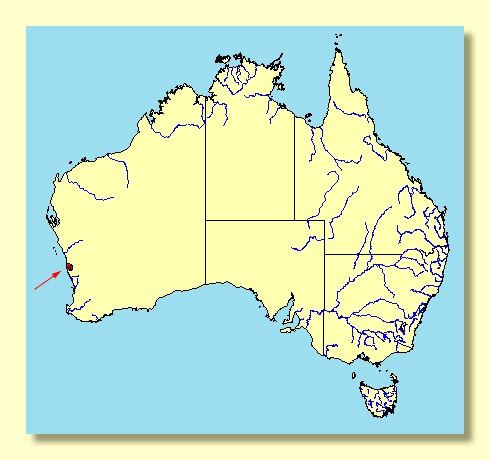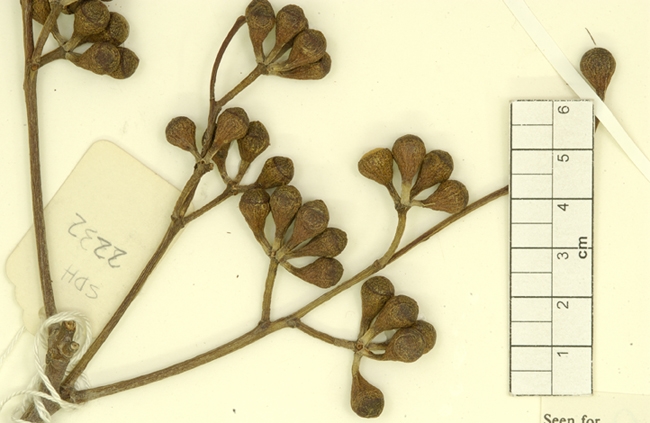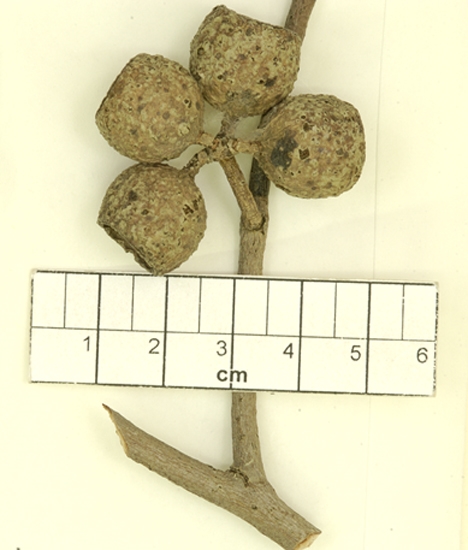Eucalyptus | Eucalyptus | Longistylus | Frutices | Diversiformae | Neuropterae
Euclid - Online edition
Eucalyptus lateritica
Bark usually rough over half of trunk, held in flattish strips or somewhat corky, grey-brown, while on smaller plants bark may be smooth, grey.
Branchlets lacking oil glands in the pith.
Juvenile growth (coppice or field seedlings to 50 cm): stems rounded in cross-section; juvenile leaves petiolate, sub-opposite becoming alternate, elliptical to lanceolate, 7–18 cm long, 1–3.5 cm wide, grey-green to green.
Adult leaves alternate, petioles 1–1.8 cm long; blade lanceolate, 7–12.5 cm long, 0.9–2 cm wide, base tapering to petiole, margin entire, apex pointed, side veins acute, concolorous, dull to slightly glossy, green, reticulation sparse, intramarginal vein remote from margin, oil glands island, several per areole.
Inflorescence axillary unbranched, peduncles 0.8–2 cm long, buds 9 or 11 per umbel, pedicels 0.1–0.7 cm long. Mature buds obovoid to broadly fusiform, 0.7–1 cm long, 0.5–0.7 cm wide, scar absent, the single operculum usually conical, stamens inflexed, anthers cuboid-oblong, versatile, dorsifixed, dehiscing by longitudinal slits that are not medially confluent, style long and straight, stigma tapered to blunt, locules 3, the placentae each with 2 vertical rows of ovules. Flowers white.
Fruit pedicellate (pedicels 0–0.6 cm long), truncate-globose, 1–1.3 cm long, 1.2–1.6 cm wide, disc descending, valves 3, near rim level or enclosed.
Seeds brown, 3–5 mm long, obliquely pyramidal (D-shaped in profile), margin narrowly flanged, dorsal surface curved to meet terminal hilum, ventrally ridged.
Cultivated seedlings (measured at ca node 10): cotyledons reniform to orbicular; stems usually rounded in cross-section, smooth or slightly scabrid on lower three internodes; leaves sessile, opposite and amplexicaul for ca 5 nodes, becoming petiolate with rounded bases but remaining opposite for at least 10 nodes or sometimes alternate as early as node 7, broadly lanceolate, 7.5–15 cm long, 2–6 cm wide, dull, grey-green.
Flowering has been recorded in August and December.
A mallee endemic to the Badgingarra – Mt Lesueur area of Western Australia, where it is confined to rocky edges and slopes of subcoastal lateritic mesas. The stems are rough on the lower part and the leaves are slightly glossy, green.
Eucalyptus lateritica belongs in Eucalyptus subgenus Eucalyptus series Diversiformae, a group of mallee species characterised by adult leaves held more or less erect, buds with a single operculum (hence no operculum scar), cuboid-oblong anthers that shed pollen by two separate slits, ovules arranged in two rows on the placenta, pyramidal seed and seedling leaves opposite for some pairs.
Eucalyptus lateritica strongly resembles E. todtiana which occurs nearby and which differs by being fully rough-barked, having denser venation and few oil glands in the adult leaves, larger fruit and by being autumn-flowering (E. lateritica flowers in winter). E. todtiana is common on lower, sandy sites in the general area. Both species are emergent mallees in heathland, but differ in preferred substrate. Another rough-barked mallee occurring in the same general area is E. suberea which differs in having buds in clusters of 11 to ca 20, and smaller buds and fruit.
Eucalyptus lateritica is listed as "Vulnerable" under the Australian Government Environment Protection and Biodiversity Conservation Act 1999 (EPBC Act). Further information may be found at this web address:
http://www.environment.gov.au/cgi-bin/sprat/public/sprat.pl


